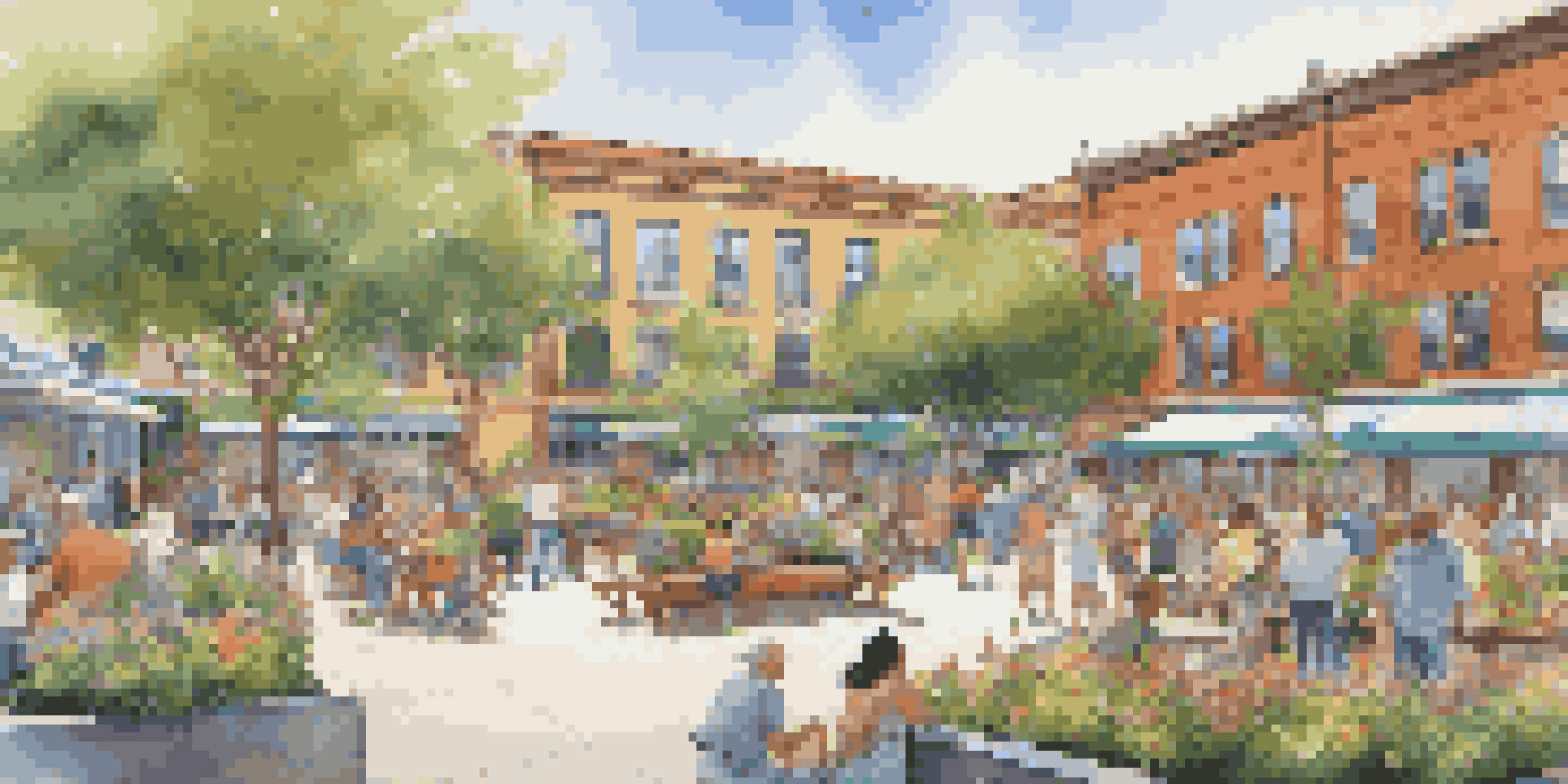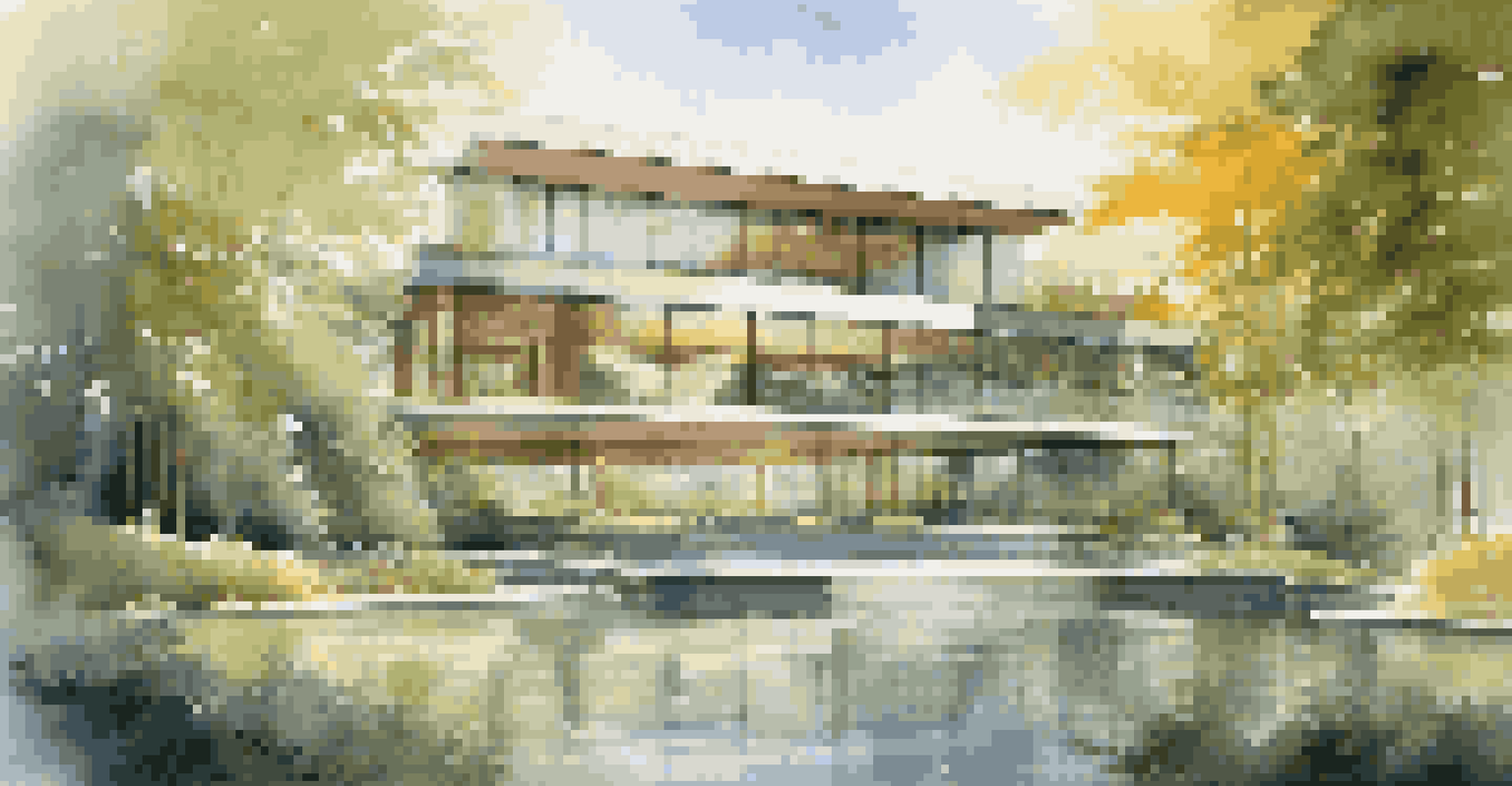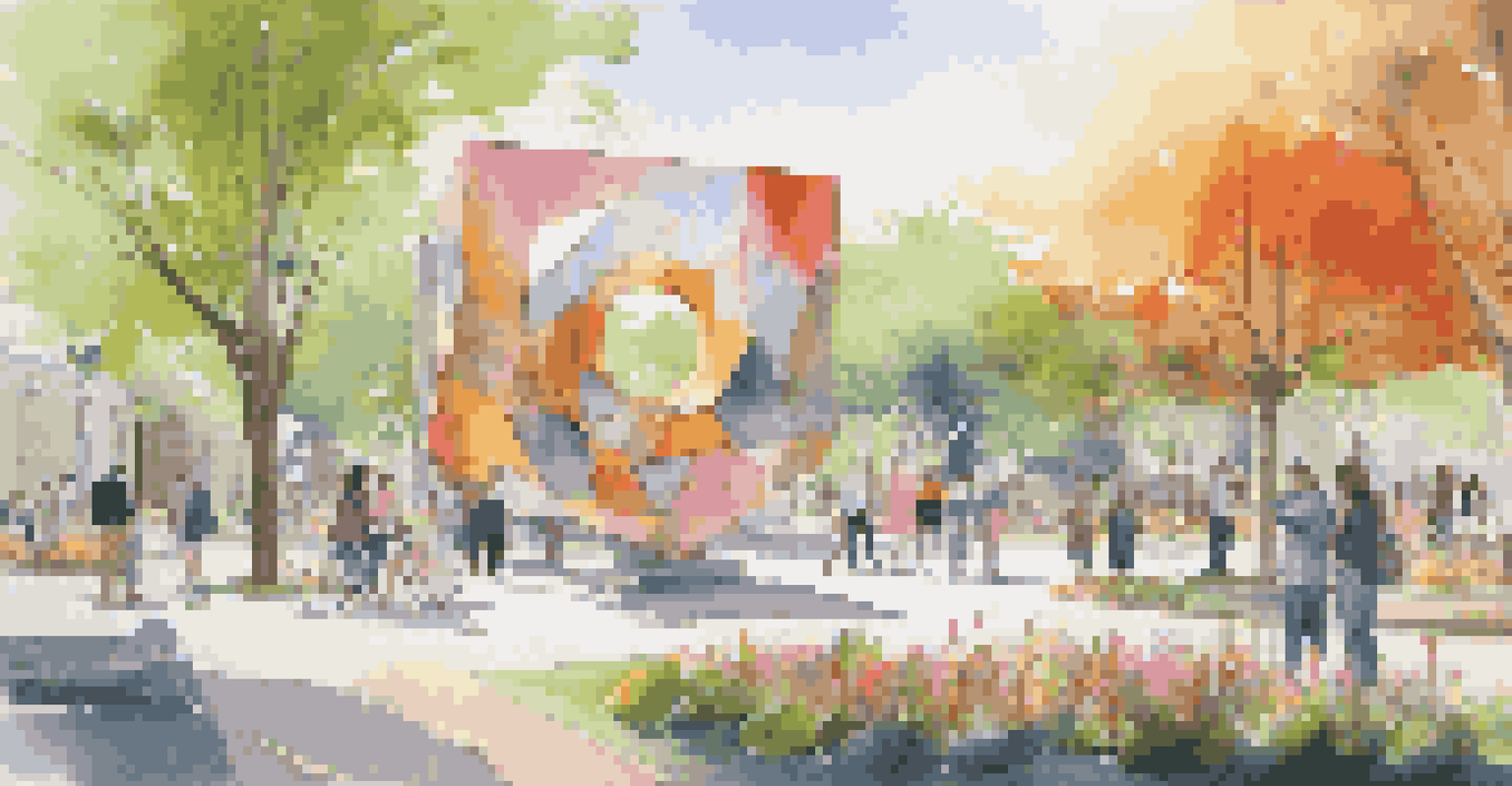Art and Memory in Architecture: Building Lasting Impressions

The Intersection of Art and Architecture
Art and architecture have long been intertwined, each enhancing the other. Think of iconic structures like the Guggenheim Museum in Bilbao, where the building itself is a work of art. This blend creates spaces that not only serve functional purposes but also evoke emotions and memories.
Architecture is the art of how to waste space.
When architecture incorporates artistic elements, it transforms the mundane into the extraordinary. For instance, vibrant murals or intricate sculptures can turn a simple plaza into a lively gathering place. These enhancements encourage people to engage with their surroundings, creating a deeper connection.
Ultimately, the intersection of art and architecture invites us to see buildings not just as structures, but as narratives filled with history and meaning. Each corner, each stroke of paint, contributes to a collective memory that resonates with everyone who passes through.
How Architecture Sparks Memories
Memories are often anchored to specific places, and architecture plays a pivotal role in this phenomenon. Each time we walk past a familiar building, it can trigger a flood of recollections tied to that space. For example, a childhood home or a favorite café can evoke warmth and nostalgia.

Architectural design can also guide our experiences within a space. Open layouts might foster conversations, while cozy nooks can encourage introspection. By thoughtfully designing environments, architects can shape how we interact with spaces and, consequently, the memories we create within them.
Art Enhances Architectural Spaces
The integration of artistic elements in architecture transforms ordinary structures into engaging environments that evoke emotions and memories.
In essence, architecture becomes a canvas for our experiences. The more meaningful these experiences, the more vivid the memories, allowing us to forge deep emotional connections with the spaces we inhabit.
Cultural Significance in Architectural Design
Architecture often embodies the culture and identity of a community. Buildings like the Sydney Opera House or the Taj Mahal reflect the artistic and historical narratives of their regions. They serve as cultural signposts that remind us of our roots and heritage.
Art is the most beautiful of all lies; it is a truth that can only be revealed through deception.
When architects integrate local art and traditions into their designs, they create structures that resonate deeply with the community. This approach not only preserves cultural identity but also fosters pride among residents. Imagine a community center adorned with local art; it becomes a hub for cultural exchange and connection.
Ultimately, architecture that celebrates cultural significance helps instill a sense of belonging. This connection between place and identity enhances our memories, making the experience of being in that space truly unforgettable.
The Role of Nature in Architectural Memory
Nature has an undeniable influence on our memories and experiences within architectural spaces. Buildings that harmoniously blend with their natural surroundings often evoke feelings of peace and tranquility. Consider how a well-placed tree or a water feature can enhance the ambiance of a park.
Incorporating natural elements into architectural design can create a sense of continuity between the indoors and outdoors. Spaces filled with natural light or greenery invite us to linger, allowing memories to form organically. For instance, a sunlit atrium can be a perfect spot for gatherings, fostering connection and joy.
Architecture Shapes Our Memories
Architectural design influences our experiences and interactions within spaces, anchoring vivid memories tied to specific locations.
Moreover, the presence of nature can positively impact our mental well-being. By designing spaces that embrace the natural world, architects help us create lasting memories tied to those serene environments, enriching our lives in the process.
Art Installations: Memories in Motion
Art installations within architectural spaces can serve as dynamic memory anchors. These temporary or permanent pieces often provoke thought and evoke emotions, making them integral to the architectural experience. For instance, the famous 'The Gates' in Central Park transformed the landscape and left a lasting impression on visitors.
When art interacts with architecture, it creates opportunities for storytelling and personal reflection. A visitor might recall their first encounter with a striking mural or an interactive installation, forever linking that memory to the place itself. Such experiences invite a deeper engagement with the environment and its narrative.
These artistic expressions can also evolve over time, leading to new memories being created as people revisit the space. Each interaction offers a fresh perspective, ensuring that the architecture remains alive in our minds long after we've left.
Community Engagement Through Architectural Art
Architecture can foster community engagement through collaborative art projects. When local artists contribute to the design of public spaces, it creates a sense of ownership and pride among residents. For example, community murals can transform neglected areas, turning them into vibrant hubs for interaction.
These collaborative endeavors not only beautify spaces but also facilitate social connections. People gather to participate, share stories, and create memories together. This communal aspect reinforces relationships within the community, making the architectural space more meaningful.
Cultural Identity in Design Matters
Incorporating local art and culture into architectural designs fosters community pride and strengthens connections to heritage.
When architecture is shaped by the community, it reflects their values and aspirations. As a result, these spaces become living entities, leaving lasting impressions on all who engage with them.
The Future of Art and Memory in Architecture
As we look toward the future, the relationship between art and architecture will continue to evolve. Advancements in technology offer exciting possibilities for immersive experiences that can enhance our memories. From virtual reality installations to interactive designs, the possibilities are endless.
Architects and artists are increasingly collaborating to create spaces that not only function well but also inspire and evoke emotion. Imagine walking through a building that changes its appearance based on the time of day, creating a unique experience every time you visit.

By embracing innovation while honoring the past, the future of architecture will likely focus on creating deeper connections. These connections will shape our memories, ensuring that the spaces we inhabit remain meaningful long into the future.